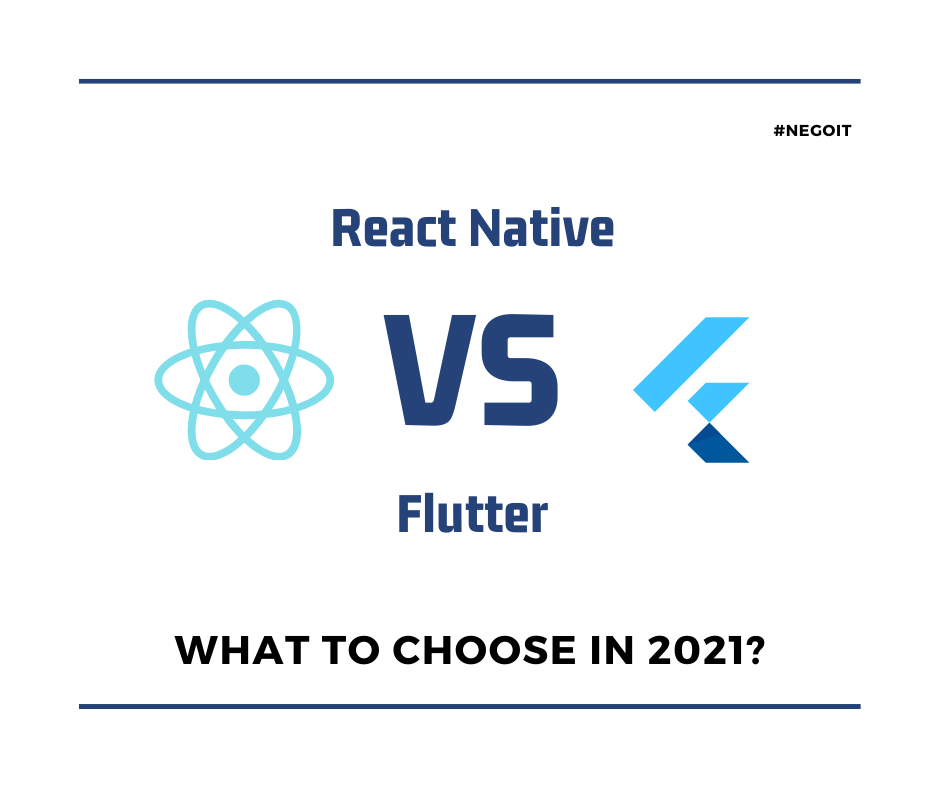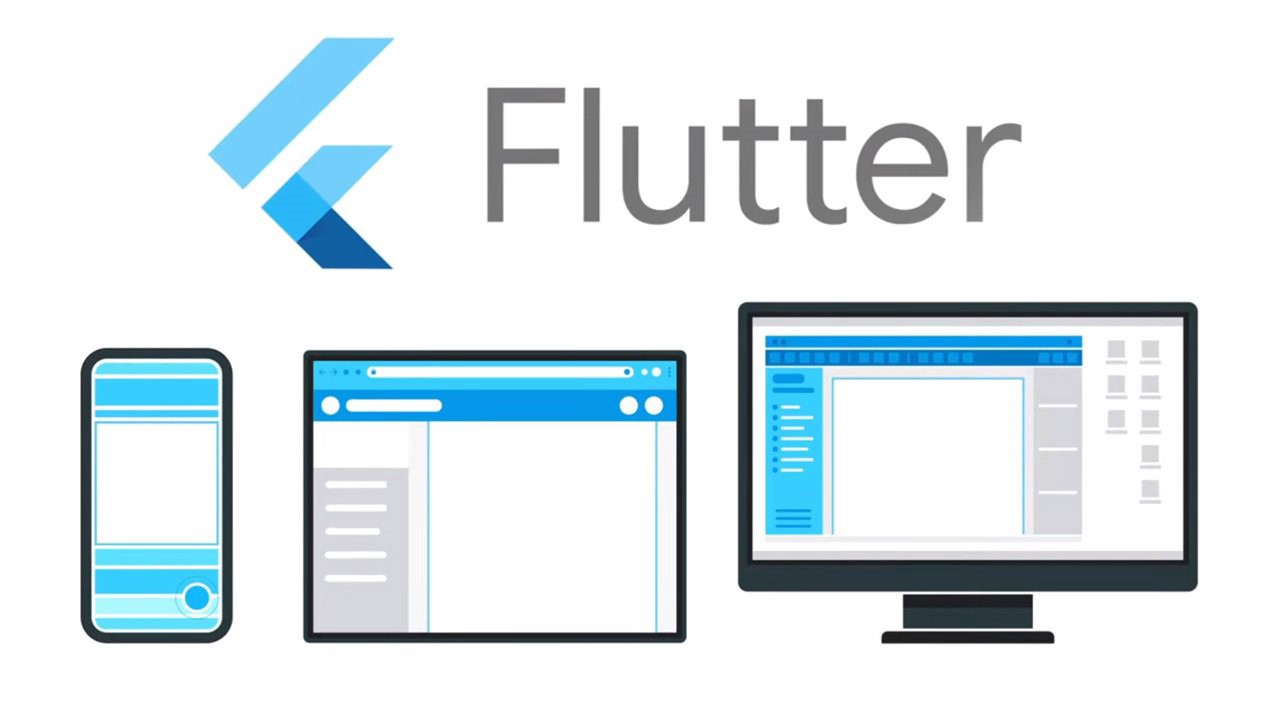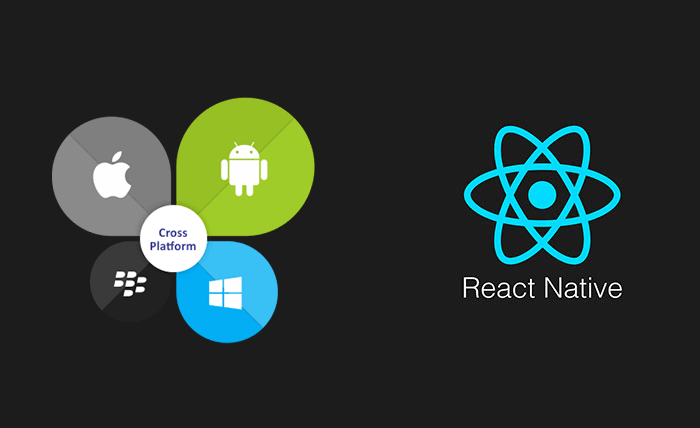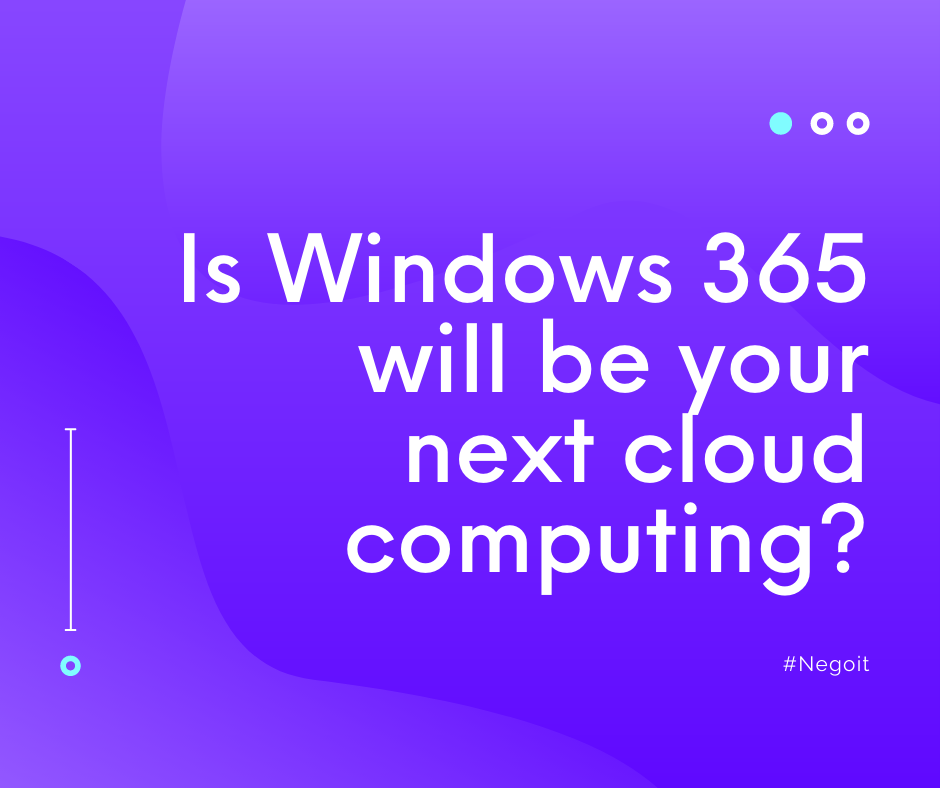
We evaluate the two market leaders – Flutter and React Native – from the perspective of app owners in this article to help you figure out which framework is ideal for your app concept.
Flutter and React Native: An Overview
Let's start with some essential (but crucial) information regarding Flutter and React Native.
What exactly is Flutter?
Flutter is a lightweight user interface framework. To put it another way, it's a full-featured app Software Development Kit (SDK) that includes widgets and features.
What is the purpose of Flutter?
Flutter makes it possible to create cross-platform apps (Mobile, Desktop, and Web Apps).
It gives developers an easy way to build and deploy visually attractive, natively-compiled applications for mobile (iOS, Android), web, and desktop – all using a single codebase (source: official Flutter website).
Desktop support in Flutter
* You can compile Flutter source code into a native Windows, macOS, or Linux desktop program when designing desktop apps with Flutter.
* Developers can install existing plugins that support the macOS, Windows, or Linux platforms, or create their own, thanks to Flutter's desktop compatibility.
* Please note that Flutter's desktop support is currently in beta. As a result, it still contains flaws. Developers can, however, use the stable channel to sample a beta snapshot of desktop support or the beta channel to keep up with the newest modifications to the desktop.
Flutter for Web
Flutter's web support provides the same mobile and web experiences. This implies that you can now create Android, iOS, and the web using the same codebase.
* Flutter's web support is particularly beneficial in the following cases, according to the official Flutter website:
* Flutter delivers high-quality Progressive Web Apps (PWAs) integrated with a user's environment, including installation, offline support, and personalized UX.
* Single Page Applications (SPAs) are web applications that load only once and transport data to and from the internet.
A little more information on Flutter.
* It's open-source and free.
* It's built on Dart, an object-oriented programming language that's quick to learn (Dart is now in its 2.14 version). So it's new and simple to pick up - especially for seasoned developers already familiar with Java and C#. Dart also advocates for sound null safety.
* The architecture is built on reactive programming, which is highly common these days (it follows the same style as React)
* It has quick, attractive, customizable widgets and is pulled from its high-performance rendering engine.
* Flutter apps offer a lovely look and feel thanks to the widget experience (while you can still create your custom app design using readily available UI elements that follow specific platform guidelines)
Flutter was created by who?
A Google team created Flutter.
However, as an open-source project, it receives contributions from both Google and the Flutter community.
What are some of the most popular Flutter apps?
* Alibaba's Xianyu app (App Store, Google Play) – Alibaba is one of the world's largest e-commerce firms.
* Hamilton app (App Store, Google Play, Website) – official app for Hamilton's Broadway musical.
* App for Google Ads (App on App Store, App on Google Play)
* The eBay Motors app (App Store, Google Play) is a powerful tool for users to browse, purchase, and sell vehicles directly from their phones.
* Stadia (App Store, Google Play) - A Google gaming platform that allows players to play games on their computers, desktops, and mobile devices.
What is React Native, and how does it work?
React Native is a JavaScript-based open-source mobile application framework.
What is the purpose of React Native?
React Native is an excellent framework to use for:
* Cross-platform development
* Building mobile apps using JavaScript language
* Developing applications for both Android and iOS using a single codebase
* Using the same design as React
Who is the creator of React Native?
React Native was developed by Facebook.
What are popular apps made with React Native?
* Facebook App (Android, iOS)
* Instagram App (Android, iOS)
* Tesla App (Android, iOS)
* Skype App (Android, iOS)
* Fb Ads Manager App (Android, iOS)
* Pinterest App (Android, iOS)
In a nutshell, Flutter and React Native.
What is?
Flutter: From a single codebase, you can create natively compiled apps for mobile, web, and desktop*.
React Native: A React-based framework for creating native applications.
Official release?
Flutter: December 2018, Google I/O
React Native: March 2015, F8 Conference
Free and open source?
Flutter: Yes
React Native: Yes
Programming language?
Flutter: Dart
React Native: JavaScript
Popularity?
Flutter: 120,000 Stars on Github (May 2021)
React Native: 95,300 stars on Github (May 2021)
Hot Reload?
Flutter: Yes
React Native: Yes
Native performance?
Flutter: Great
React Native: Great
UI?
Flutter: On modern operating systems, Flutter apps appear just as good as in earlier versions.
The apps look and behave the same across iOS and Android because they share the same codebase. Still, they may also replicate the platform design thanks to Material Design and Cupertino widgets.
Flutter comes with two sets of widgets that conform to different design styles: Material Design widgets are based on Google's Material Design design language, while Cupertino widgets are inspired by Apple's iOS design.
This means that your Flutter app will look and act like native components on each platform.
React Native: Appearance-wise, application components are identical to native ones (e.g., a button on an iOS device looks just like a native iOS button and the same on Android).
Because React Native relies on native components, you can rest assured that your app's components will be updated as soon as the OS UI changes.
If you want your app to look nearly identical across platforms – as well as on earlier versions of an operating system (like Flutter does), consider leveraging third-party libraries. They will allow you to utilize Material Design components rather than native ones.
When should you use React Native, and when should you use Flutter?
One of the most critical components of mobile and web app development is project completion on schedule.
Both React Native and Flutter are cross-platform, which reduces time to market. Furthermore, their third-party libraries and ready-to-use components make using them to construct your project more efficient.
Better still, Flutter and React Native provide more than simply rapid development; they can also lower project costs. And these are the main reasons you should think about using either framework for your project. But which solution allows for the quickest development time? Or does it best suit your app concept?
That depends on the nature of your project and the skill balance of your team.
* Do your developers understand Dart? If so, programming with Flutter will be a piece of cake.
* Are your programmers well-versed in JavaScript? If so, React Native appears to be the best option.
* Do you want to create the UI for your project utilizing native UI components? If so, select React Native.
* Is brand-first design important to you? If so, we believe Flutter is a good fit.


Consider each application on its own merits. It's always a good idea to discuss your project with an experienced team of developers: people who are capable of considering different approaches and have a diverse enough skill set when it comes to cross-platform development – because if you seek advice from programmers who only know one framework, they'll likely steer you to use that tool.
Take comfort in the fact that Flutter and React Native are both excellent technologies. Moreover, they profit from widespread recognition and long-term trust.
2 Comments

Georgemix
2022-10-28 09:00
For the first time I became interested in sex toys at the age of 19-20. After graduation, I worked a little and got the opportunity to pamper myself. Moreover, there was no relationship then, and sex too ... Around the same time, there was the first visit to the sex shop - a very exciting event! I decided more than a month, and until the last I doubted, but the desire to experience something "special" still overpowered. I remember I was very excited at the mere thought that I would have to walk and look, tell the sellers what you want to buy, and how they would look at you after that ... After a month of doubts, I still came. Half an hour looking for the entrance to the sex shop. I walked around the building 10 times, but there was no sign of the entrance. Just a residential building with a few shops - no signs, no signs, nothing at all. And the entrance was inside one of the usual shops. Well camouflaged. Later, a sign was also found - small, modest and completely inconspicuous. The sex shop https://self-lover.store/elektrostimulyatsiya/1325/ had a nice atmosphere, dim lights and no one but 2 male salespeople. The room was divided into several thematic parts. The first had only sex toys, the second was all for role-playing, and the third was erotic lingerie. Walked and looked. Not to say that he was very shy, but he still experienced a certain tension. For the first time I took a few toys: 1. A simple vagina (masturbator). It was unpleasant to use without a condom (albeit with lubrication) due to the hard internal relief. If with a condom, then everything is fine. But the orgasm came too fast, so it wasn't very interesting. In general, it felt no different from the usual strong hand grip on the cock. 2. Small anal vibrator. https://self-lover.store/kosmetika/ In principle, he became a favorite toy during masturbation, he always finished with him very hard. https://self-lover.store/lubrikanty/ During orgasm, he slipped out of the ass, so you had to hold him or not use lubricant. Then I noticed that if, after ejaculation, you insert it into yourself again, then a second erection occurs much faster. By the way, it was after meeting with the vibrator that I realized what the secret of the prostate is, and that it stands out from its stimulation. 3. Small butt plug. I liked to put it on the edge of the table https://self-lover.store/vibromasazhery/ and sit down ass. At first, just sit and get high, move a little - the erection was iron, lubricant was constantly emitted from the penis. But still, it didn’t work out from sex toys (without penis stimulation). Then there were new toys: 4. Tried a full dildo first (no vibration). I was attracted to it by its appearance - beautiful, delicate material, pleasant to touch, but it turned out to be too large (4 cm thick). After several uses, I realized that the experiments with large toys are over. 5. Then came a small anal dildo https://self-lover.store/lubrikanty-na-silikonovoy-osnove/ on a suction cup - thin, curved, hard, with a relief head. I've had a lot of fun with him. I attached it on the table, and on the wall in the bathroom, and in the position of a rider in bed ... Most of all I liked to sit on it and sway at a slow pace for 20-30 minutes (without touching the penis). I liked it more than the orgasm itself. 6. There were also several prostate massagers. Moreover, both very inexpensive and top ... Advertising, as always, lied - not a single such massager can replace a living finger. There is something https://self-lover.store/probniki/1240/ to compare with in this regard ... It's nice, of course, and there weren’t any massagers, but it didn’t work out from them (without penis stimulation). But from the female finger finished. 7. There were anal beads and chains. https://self-lover.store/erektsionnye-koltsa/ Also amusing toys, but completely useless. Compared to vibrators, it's somehow completely uninteresting. 8. Realistic vagina (masturbator) also turned out to be a complete marketing bullshit. And it doesn't even look like real sex. Don't get fooled! After 2-3 years of experiments, I realized that I was wasting my money. Not that I really regret it, after all, this is a certain sexual experience, but I realized one thing - in my relationship, these things are clearly superfluous. In sex, I like to caress, touch, hug, talk... And all these toys simply distract and interfere. You're shifting responsibility from your hands and dick to a piece of plastic. So uninteresting... When there was no sex for more than a year, there was no desire to take up toys again. More interested in relaxing and erotic massage. Not all sorts of salons, but personal acquaintances. It is much more pleasant to spend time with a living person than with a piece of plastic. Then for some time there was an opportunity to practice erotic massage. After that, I realized that sex toys https://self-lover.store/zbudzhuiuchi-i-stymuliuiuchi-mastyla/ are something so primitive compared to what you can do with your own hands, that this is really what is called "the industry is fed." But "experience is the son of difficult mistakes", and apparently it was necessary to go through this in order to understand. Not a penny of the sex industry! A living person is everything. Plastic is nothing.



neiplynup
2022-10-24 13:44
Wedig KE, Whitsett JA buy ivermectin for scabies